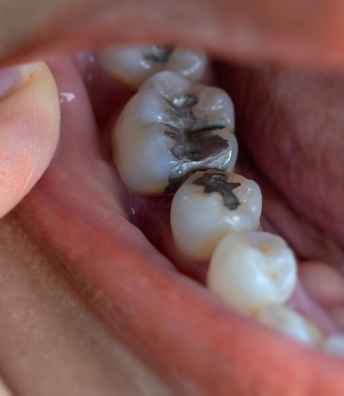Dental Filling In Hyderabad | Cost | Treatment
Dental Filling
The dental filling is a material used to restore the damaged area of a tooth. The filling is used to repair the tooth after removing a cavity. It can also be used to restore the tooth after a root canal treatment or after crowns are placed on it.
Dental fillings come in many different shapes and sizes. The dentist will choose what type of filling you need based on your oral health history and the amount of damage inside your mouth.
When Dental Filling is needed?
There are various signs and symptoms where fillings can be required. The symptoms could be as below:
- A toothache
- Tooth sensitivity to hot or cold foods and drinks
- Tooth discoloration, which is usually brownish or black
- Unexplained pain when chewing
- Gum recession around the tooth
- Visible decay on the surface of your teeth
- Hole in tooth
So if you also have any of these symptoms experienced, then it’s advisable to see a dentist as soon as possible.
The procedure of Dental Filling
- Preparation of the tooth: The first thing that your dentist would do is prepare your teeth for the filling. This involves removing debris between your teeth and then filing down any sharp edges or rough areas so that it does not cause discomfort during treatment.
- Application of the filling material: After this, a liquid resin-based composite resin is prepared, forming a hard plastic coating over the surface of your tooth once hardened by light curing (a special light). This strengthens your tooth structure and prevents decay from occurring again in this area of your mouth.
- Curing of the filling: Once you’re ready for this step, we will apply ‘cure lights’ to harden and set up our new dental filling before placing a temporary protective layer over it until we can come back to finish off with more polish on all sides if necessary (as well as making sure no excess was left behind).
- Post-treatment care: Finally, once this process has been completed successfully without any problems whatsoever, then all that remains before leaving today is some post-care instructions, including how often you should brush & floss etc., as well as who should call us in case something goes wrong after leaving here today!
What material is the filling made of
The material used for the filling is a decision made by the dentist based on the location of the filling and your preferences. Some materials are better than others for different conditions. The most common types of materials used for filling include:
- Porcelain: Porcelain is one of the most popular choices because it does not require drilling, has a natural look and feel, and can be used to replace healthy tooth structures and damaged areas. It also has an excellent strength-to-weight ratio, making it ideal for large fillings that require strength without adding unnecessary weight to your mouth.
- Composite Resin: This composite resin material features small particles embedded in a plastic base (the “resin”). This blend makes them strong while retaining flexibility so they can be adapted to fit any size cavity or shape—even those with less than perfect alignment between teeth or worn-down cusps. A drawback is that this material doesn’t have quite as natural appearance compared with porcelain since it’s darker in color; however, many patients find that this isn’t an important enough reason not to use them anymore when considering all their benefits.
Types of Dental fillings
- Metal Filling: This is one of the most commonly used types of dental filling. The metal, which is usually made from gold alloys or platinum-based alloy, is placed in the cavity of your tooth.
- Amalgam (tooth colored) filling: It’s a mixture of various metals and other materials that are combined together to make a uniform color. It contains mercury, silver, tin, copper, zinc, and sometimes palladium. These fillings are bonded onto the surface of your teeth using modern adhesives such as resin cement and composite resins.
- Composite Filling: White Porcelain / Ceramic Filling: Composite fillings contain glass microspheres that give them their color along with resins that hold everything together within this type of dental filling; this means there’s no need for drilling out decay before applying these types
Post-treatment precautions
- Avoid chewing on the treated area for a few days after treatment.
- Eat soft foods for a few days following treatment.
- Do not drink hot beverages or eat sticky food for 24 hours after treatment as this may cause irritation to the mouth and gums due to heat, cold, or sweeteners in foods and drinks that some patients may experience after dental procedures involving teeth whitening.
- Avoid smoking and alcohol until all symptoms have subsided (usually 24 to 48 hours).
- Do not floss too vigorously while there are any signs of sensitivity present, as this may cause discomfort, which could lead to swelling of tissues around an affected tooth(s) or gum(s).
- You should brush gently with a soft-bristled toothbrush until any signs of sensitivity disappear (usually 24 hours).
- If you feel pain when drinking hot liquids, reduce their temperature before consuming them until any discomfort disappears (usually 24 hours).
Book Appointment

Dental Filling In Hyderabad in Hyderabad
Our Specialities
-
Skin TreatmentSkin Treatment
-
Hair TreatmentHair Treatment
-
Dental TreatmentDental Treatment
-
Classy CosmetologyClassy Cosmetology
-
TherapiesTherapies
-
Non-Surgical FaceliftNon-Surgical Facelift
